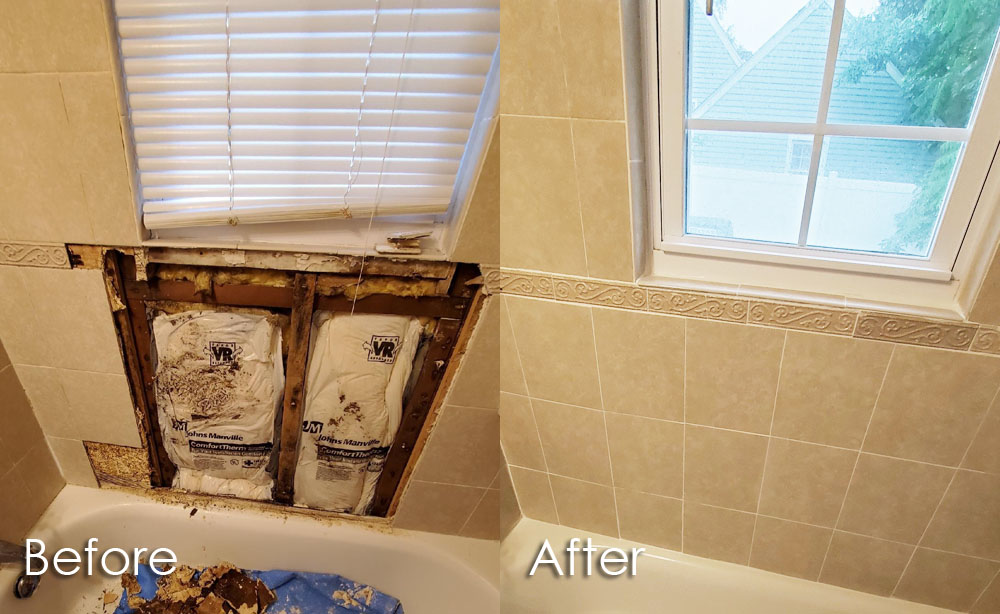Ways to Fix a Water-Damaged Wall in the Bathroom
Ways to Fix a Water-Damaged Wall in the Bathroom
Blog Article
They are making several great points related to Preventing Water Damage in the Bathroom overall in the article just below.

The restroom is exceptionally vulnerable for damp buildup and prospective water damages due to the regular use water in it. This article provides basic inspection techniques to assist detecting water damage dangers.
The constant use of water in the shower room makes it exceptionally vulnerable for moist build-up and also possible water damage. By examining it on a regular basis, you can lower water related damages.
The complying with collection of inspections is very easy to perform and ought to be done as soon as in every 3 months in order to maintain your bathroom in good shape as well as to avoid prospective water problems brought on by the bath tub, the shower, pipeline joints and also plumbing, sinks, cabinets, and the bathroom
Do not overlook doing these assessments and also be detailed while performing them. Keep in mind that these simple evaluations can save you a lot of money by providing early indications for water damage
Sinks and Cabinets
Sinks and also closets are revealed to wetness as well as moisture everyday as well as are commonly ignored. Check on a regular basis under the sink as well as on the counter top above it. Repair any drip in the catch as it might recommend drainpipe issues. Browse the sink, sluggish draining pipes may indicate an obstructed drainpipe. Change sink seals if they are broken or loose.
Bathtub and Shower
The shower and also bath tub need special attention and upkeep. Examine the ceramic tiles as well as replace if fractured. See to it that there is no missing out on grout between the tiles. Evaluate as well as replace cracked caulking at joints where the wall surfaces satisfy the floor or the bathtub. Obstructed drains pipes as well as pipes troubles will certainly avoid the bathtub from drying out as well as may show severe issues beneath the bath tub. Talk to a professional quickly to avoid structural damages. Focus on discolorations or soft locations around the tub wall surfaces as they might indicate an inner leak.
Plumbing
Signs for water damage are tough to spot since the majority of pipes are mounted inside the wall surfaces.
Pay special attention to floor covering and walls dampness as well as discolorations as they may indicate an undetectable plumbing issue. Examine wetness degrees in adjacent rooms too.
The Bathroom
The toilet is a prone water joint. Inspect the water lines and also search for leakages around the bathroom seat, in the tube, as well as under the water container. If you discover any kind of indications of dampness on the floor around the commode, check for leakages in the toilet rim as well as container seals.
Understand that hanging commode bowl antiperspirants increases the possibilities for obstructions.
TIPS TO PREVENT WATER DAMAGE IN THE BATHROOM
The average household uses approximately 80-100 gallons of water per person per day. For a family of 4, that's almost 2,500 gallons of water a week! The largest portion of this consumption comes from bathroom use. Flushing the toilet uses the most water, followed by taking a shower or bath. With that much water running through the home, water damage in the bathroom is bound to happen. Knowing how to spot signs of a water leak is essential to preventing long-term damage. This guide provides you with tips to reduce the impact of water damage on your bathroom.
CAUSES OF BATHROOM WATER DAMAGE
Pipe breaks are the most common cause of water damage we see in our daily jobs. The age of a pipe plays a large role in a pipe break as well as corrosion. Over time, the metal begins to break down, allowing water to escape. Frozen pipe breaks are also a concern in the winter months. Toilet overflows caused by paper products or children flushing inappropriate items. Degraded caulking around the toilet or bathtub can allow water seepage, sometimes behind the fixture, into the subfloor or walls. Condensation forms when the water in a pipe is cooler than the air temperature. Beads of water form on the exterior of the pipes, sometimes so much so that the water begins to drip and pool below. Sink or shower backups created by poor drainage. HOW TO PREVENT WATER DAMAGE IN YOUR BATHROOM
Inspect your toilet supply line for worn or frayed hoses and replace them as needed. Winterize your plumbing to prevent a frozen pipe break. Use vent fans to prevent condensation that can lead to mold growth. Routinely check and replace degraded caulking around your toilet or bathtub. Increase the temperature in your toilet tank and insulate your pipes during the warm summer months to keep condensation from forming. Use child safety locks on the toilets. Flush only toilet paper. "Flushable" wet wipes are actually not good for your plumbing system. Additionally, feminine hygiene products should not be flushed. Prevent water from escaping the tub or shower. Make sure shower curtains are in good condition. Inspect shower doors and replace the seal strip if necessary. Wipe up any water that accumulates on the floor and use bath mats. Water left to sit can cause damage to the tiles and flooring. Refrain from using bath products containing heavy oils to avoid a clogged drain.

Hopefully you enjoyed our topic about How to Repair and Prevent Bathroom Water Damage. Thanks a lot for taking the time to read through our piece of content. For those who enjoyed our post if you please do not forget to pass it around. I value reading our article about How to Repair and Prevent Bathroom Water Damage.
Check Us Out Report this page